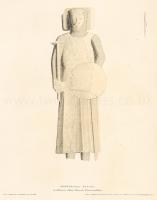Text this colour links to Pages. Text this colour links to Family Trees. Place the mouse over images to see a larger image. Click on paintings to see the painter's Biography Page. Mouse over links for a preview. Move the mouse off the painting or link to close the popup.
All About History Books
The Deeds of King Henry V, or in Latin Henrici Quinti, Angliæ Regis, Gesta, is a first-hand account of the Agincourt Campaign, and subsequent events to his death in 1422. The author of the first part was a Chaplain in King Henry's retinue who was present from King Henry's departure at Southampton in 1415, at the siege of Harfleur, the battle of Agincourt, and the celebrations on King Henry's return to London. The second part, by another writer, relates the events that took place including the negotiations at Troye, Henry's marriage and his death in 1422.
Available at Amazon as eBook or Paperback.
Effigy of Effigy in Great Malvern Church is in Monumental Effigies of Great Britain.

THIS unappropriated figure is of the same period with that of Longespee, Earl of Salisbury. There are some remarkable peculiarities in the arms which it bears. In the right hand is a formidable martel de fer, horseman's hammer, or pole-axe, formed on the same principle as the pick-axe of the labourer, but shorter in the head, which measures about nine inches, and has one cutting and one pointed end; apparently a most efficient weapon for breaking defensive armour, beating down and wounding opponents. In the left hand is a circular target, eighteen inches in diameter. On the left side is suspended the broad-bladed sword of the time.